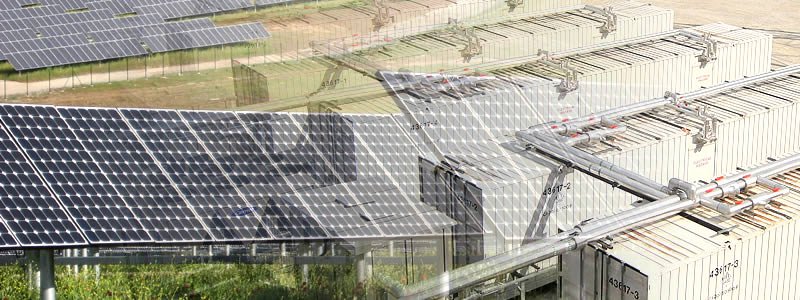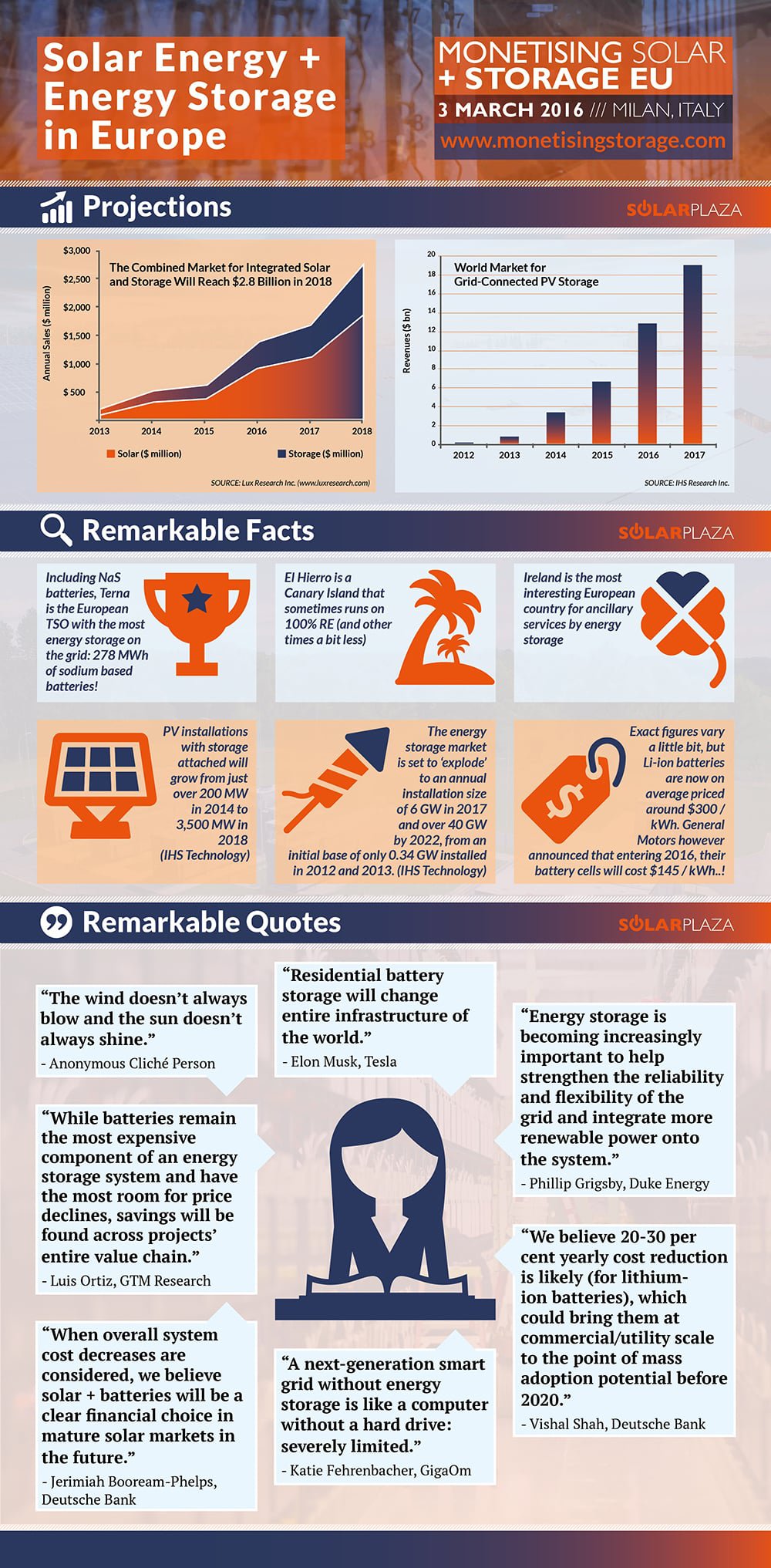
These last years have seen a huge growth in the renewables sector, including solar energy. IHS predicts that PV installations with storage attached will grow from just over 200 MW in 2014 to 3.5 GW in 2018, according to its ‘The Role of Energy Storage in The PV Industry’ report. But if renewable energy wants to continue its increasing development and large scale deployment, additional tools and technologies are needed. The electricity grid wasn’t build for variable energy sources, which has spurred a quest for ways to successfully integrate higher percentages of renewable energy into the power grid. Renewable energy generation is also heavily dependent on weather conditions, which are variable (what to do “when the sun doesn’t shine and the wind doesn’t blow?”). These are just a few problems to which energy storage has the potential to provide a solution.
The rise of the electric vehicle sector has had a big impact on the energy storage industry. Ever since Tesla announced their “Gigafactory”, a large-scale lithium-ion battery manufacturing plant, lithium-ion batteries have been the fastest developing storage technology, emerging as the major technology of choice for other types of storage applications as well. In Tesla's investor newsletter Musk stated that "the Gigafactory will allow us to achieve a major reduction in the cost of our battery packs and accelerate the pace of battery innovation. This will also allow us to address the solar power industry’s need for a massive volume of stationary battery packs."
As indicated by Apricum, three major drivers for the growth of stationary battery energy storage system application are: battery costs, regulatory frameworks, and the market for addressable services. Battery costs are declining because of economies of scale (such as the Giga-factory), increasing performance and better financing conditions. At the same time, countries are implementing policies to support the participation of energy storage in the energy ecosystem. In addition to this there are several significant trends in the market to which battery energy storage systems can respond:
- An increasing need for flexibility in the electricity systems
- The extension and enforcement of generation, transmission and distribution infrastructure
- The high electricity bills for industrial, commercial and residential users
Because of these factors, the demand for energy storage solutions is growing and competitiveness is increasing. Add to this the push given by the climate talks in Paris, and the energy storage industry is set to make 2016 its best year yet.
Now that the technology is maturing, more and more energy storage projects are implemented all over Europe. Growing practical knowledge creates growing insights into the value of energy storage. We have shifted from the questions “what is it? ” and “what does it do?”, to “how can we apply it AND make money with it?”
To tackle this vital question, Solarplaza is organising the Monetising Solar + Storage conference on March 3, in Milan, Italy. It will be the first European conference to focus on business models and financing structures for grid-connected solar + storage installations. In preparation of this event we have created an overview of the biggest grid-connected solar + storage installations in Europe - so far.
The overview focuses on electrochemical energy storage, which includes various Li-ion chemistries, flow batteries and hydrogen storage, but excludes NaS batteries. We included projects that are operational, under construction or contracted. It should also be noted that larger battery parks do exist in Europe, but that the ones mentioned here are specifically tied to solar PV installations.
Click to tweet article and infographic

To Download The Full Version, Including The Top 10, Please Leave Your Contact Details Below!
